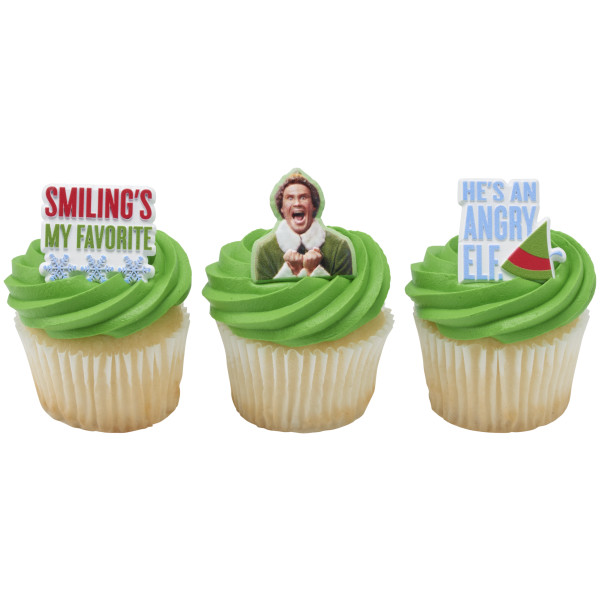There's something magical about elves that lights up our hearts, and for many of us, "elf smiling" is a favorite moment in stories, movies, and even real life. Whether it’s their playful nature, their enchanting charm, or their ability to make us feel like anything is possible, elves have a way of capturing our imagination. But what exactly makes an elf’s smile so special? Let’s find out!
Elves have been a part of folklore and fantasy for centuries, and their presence in modern media has only grown stronger. From classic fairy tales to blockbuster films, these mystical creatures continue to inspire wonder and joy. And when it comes to elf smiling, there's just something about that radiant grin that warms the soul. It's like a little piece of magic entering your world.
So, why do we love elf smiling so much? Is it the way their eyes twinkle with mischief, or the way they seem to bring light to even the darkest corners of a story? Whatever the reason, this article will explore everything you need to know about elf smiling, why it’s so captivating, and how it fits into the broader lore of elves. Get ready to dive deep into this enchanting topic!
Read also:Breckynn Willis Butt The Hype The Truth And Everything You Need To Know
Table of Contents
- The History of Elves in Mythology
- Characteristics That Make Elves Special
- Why Smiling is Important in Elf Culture
- Famous Elves in Pop Culture
- Iconic Elf Smiling Moments
- The Psychology Behind Why We Love Elf Smiling
- Elf Smiling in Art and Literature
- Modern Interpretations of Elf Smiling
- The Benefits of Elf Smiling for Mental Health
- Conclusion: Why Elf Smiling's My Favorite
The History of Elves in Mythology
Elves have been around for a long time, way before they became the cute and jolly characters we know today. Back in Norse mythology, elves were seen as powerful beings with magical abilities. They were often associated with nature and were thought to live in forests, meadows, or even underground. These early elves weren’t always smiling; some were mischievous, others were downright dangerous. But over time, as stories evolved, so did the image of elves.
How Elves Transformed Over Time
As folklore spread across Europe, elves began to take on different roles in various cultures. In Germanic mythology, they were seen as healers and protectors. In Celtic legends, they were more mischievous, playing tricks on humans but also offering wisdom. By the time we get to modern interpretations, like those in J.R.R. Tolkien’s Middle-earth, elves are depicted as wise, graceful, and yes, often smiling beings.
So, how did we go from scary forest spirits to the cheerful elves we love today? A lot of it has to do with the evolution of storytelling and the influence of writers like Tolkien, who helped shape the modern image of elves as benevolent and joyful creatures.
Characteristics That Make Elves Special
What makes elves stand out from other mythical creatures? Well, for starters, they’re known for their beauty, grace, and intelligence. Elves are often depicted as being incredibly skilled in areas like archery, crafting, and magic. But beyond their physical and mental abilities, it’s their emotional depth that really sets them apart.
Why Elves Are So Relatable
Despite their otherworldly qualities, elves have a way of feeling relatable to humans. They experience emotions just like we do—love, sadness, joy, and yes, happiness. And that’s where elf smiling comes in. When an elf smiles, it’s not just a fleeting expression; it’s a moment of pure connection, a reminder that even magical beings can share in the joy of life.
- Elves are known for their kindness and compassion.
- They have a deep connection to nature and the world around them.
- Elf smiling often symbolizes hope and positivity.
Why Smiling is Important in Elf Culture
In many depictions of elves, smiling isn’t just a random act—it’s a cultural norm. Elves are often shown as beings who value harmony and happiness, and their smiles reflect that. Whether they’re greeting a friend, celebrating a victory, or simply enjoying a quiet moment in nature, elves use their smiles to connect with others and spread joy.
Read also:Poop Plane The Surprising World Of Aviations Most Unusual Topic
Think about it: when you see an elf smiling, it’s hard not to smile back. There’s something infectious about their positivity that makes you want to join in on the fun. It’s no wonder why elf smiling has become such a beloved part of their lore.
Famous Elves in Pop Culture
Let’s talk about some of the most famous elves in movies, books, and TV shows. These characters have helped shape our modern understanding of elves and have made elf smiling a staple in pop culture.
Legolas from "The Lord of the Rings"
Legolas is one of the most iconic elves in literature and film. Played by Orlando Bloom in Peter Jackson’s adaptation, Legolas is known for his incredible archery skills, his loyalty to his friends, and, of course, his charming smile. Whether he’s fighting off orcs or sharing a laugh with Gimli, Legolas always brings a sense of lightness to the story.
Arwen from "The Lord of the Rings"
Another beloved elf from Tolkien’s world is Arwen. Her beauty and grace are unmatched, and her smile often serves as a beacon of hope in the darkest moments of the story. Arwen’s character reminds us that elf smiling isn’t just about happiness—it’s also about strength and resilience.
Buddy the Elf from "Elf"
No discussion of elf smiling would be complete without mentioning Buddy the Elf from the holiday classic "Elf." Played by Will Ferrell, Buddy is the epitome of joy and enthusiasm. His oversized grin and unwavering optimism make him one of the most memorable elves in pop culture. Who can forget his famous line, "The best way to spread Christmas cheer is singing loud for all to hear!"?
Iconic Elf Smiling Moments
There are countless moments in movies and TV shows where elf smiling steals the show. These moments are often filled with emotion and leave a lasting impression on viewers.
"The Lord of the Rings" – Legolas and Gimli’s Friendship
One of the most heartwarming moments in "The Lord of the Rings" is when Legolas and Gimli share a laugh after surviving a battle. Legolas’s smile in that scene perfectly captures the bond they’ve formed and the joy of overcoming adversity together.
"Elf" – Buddy’s First Christmas
In "Elf," one of the most memorable scenes is when Buddy finally gets to celebrate Christmas with his family. His infectious smile lights up the screen as he sings carols and decorates the tree. It’s a moment that reminds us why elf smiling is so special—it’s all about spreading joy and love.
The Psychology Behind Why We Love Elf Smiling
There’s actually a scientific reason why elf smiling is so appealing to us. Studies have shown that seeing someone smile, especially a smile that’s genuine and heartfelt, can trigger positive emotions in our brains. This is known as the "mirror neuron effect," where we unconsciously mimic the emotions we see in others.
When we see an elf smiling, it’s not just their physical appearance that draws us in—it’s the emotion behind the smile. Elves are often depicted as pure-hearted beings, and their smiles reflect that. It’s no wonder why elf smiling has such a powerful impact on us.
Elf Smiling in Art and Literature
Artists and writers have been capturing the essence of elf smiling for centuries. From classic paintings to modern illustrations, elves are often depicted with warm, inviting smiles that draw viewers in. In literature, elf smiling is used as a literary device to convey hope, love, and positivity.
Why Art and Literature Love Elf Smiling
Elf smiling in art and literature serves a dual purpose: it adds depth to the characters and enhances the overall mood of the piece. Whether it’s a painting of an elf dancing in a meadow or a novel where an elf’s smile saves the day, these moments remind us of the magic and wonder that elves represent.
Modern Interpretations of Elf Smiling
As our understanding of elves evolves, so does our interpretation of elf smiling. In recent years, we’ve seen more diverse and inclusive portrayals of elves in media. These modern interpretations often focus on the universal themes of joy, connection, and community, making elf smiling even more relatable to audiences today.
For example, in the Netflix series "The Witcher," the elves are depicted as a marginalized group fighting for their rights. Despite the challenges they face, their smiles serve as a reminder of their resilience and hope for a better future.
The Benefits of Elf Smiling for Mental Health
Believe it or not, elf smiling can actually have a positive impact on your mental health. Seeing a smile, whether it’s from an elf or a real person, can boost your mood and reduce stress. It’s like a little pick-me-up that reminds you to find joy in the small things.
So, the next time you’re feeling down, why not take a moment to watch a movie or read a book featuring an elf smiling? It might just be the boost you need to brighten your day.
Conclusion: Why Elf Smiling's My Favorite
In conclusion, elf smiling is more than just a cute expression—it’s a powerful symbol of hope, joy, and connection. From ancient mythology to modern pop culture, elves have captured our hearts with their enchanting smiles and magical presence. Whether you’re a fan of Legolas, Arwen, or Buddy the Elf, there’s something about elf smiling that makes it truly special.
So, the next time you see an elf smiling, take a moment to appreciate the magic they bring into your life. And don’t forget to share this article with your friends and family—you never know who else might need a little elf-inspired joy in their day!


